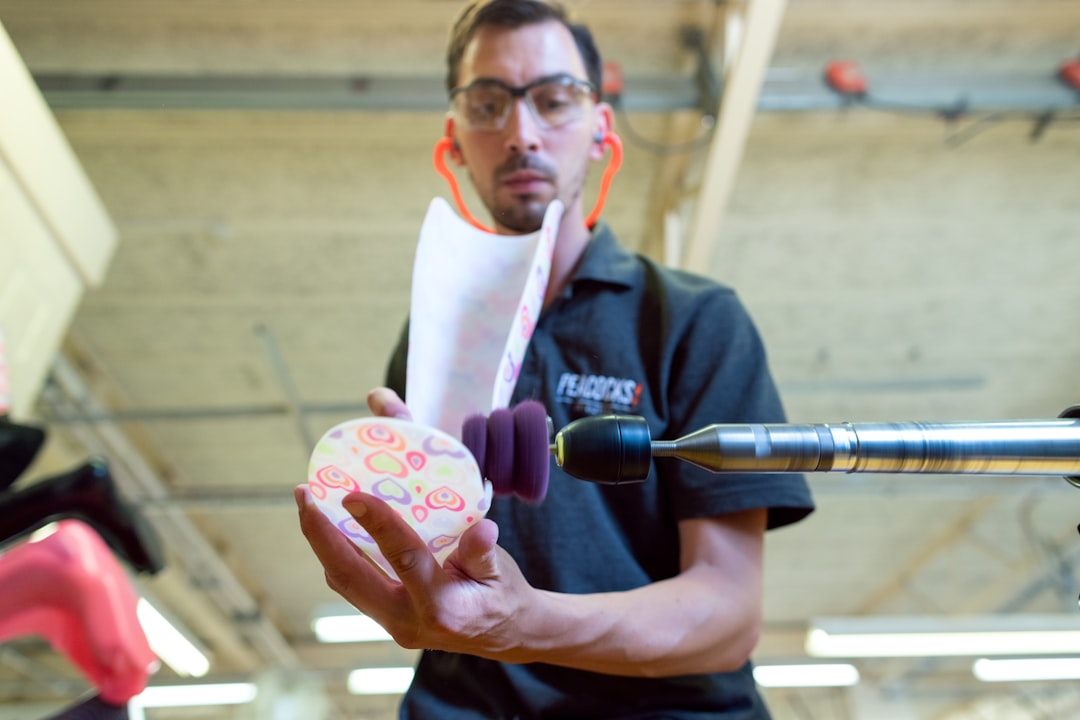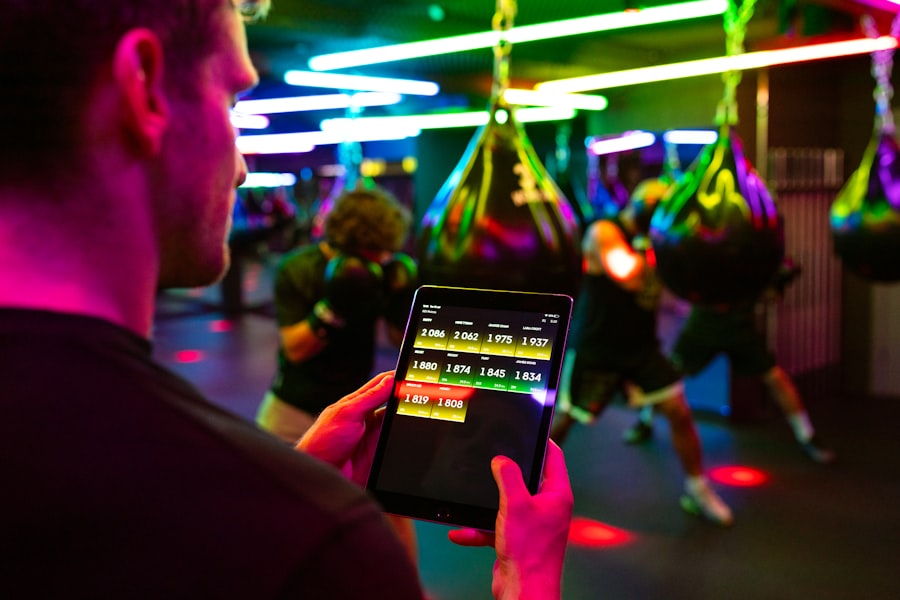
As I delve into the world of video editing, I find myself increasingly fascinated by the role artificial intelligence (AI) plays in transforming this creative process. AI tools have revolutionized the way we approach video editing, making it more accessible and efficient than ever before. These tools leverage machine learning algorithms to analyze footage, identify key elements, and automate various editing tasks.
This not only saves time but also allows me to focus on the creative aspects of my projects rather than getting bogged down in technical details. The capabilities of AI in video editing are vast and varied. From automatic scene detection to intelligent color correction, these tools can significantly enhance the editing workflow.
I’ve noticed that AI can help me streamline repetitive tasks, such as cutting out silences or adjusting audio levels, which frees me up to concentrate on storytelling and visual aesthetics. Understanding these tools is crucial for anyone looking to elevate their video editing skills, as they can provide a competitive edge in an increasingly digital landscape.
Key Takeaways
- AI tools for video editing can automate repetitive tasks, enhance video quality, and generate effects and transitions.
- When choosing the right AI video editing tool, consider factors such as ease of use, compatibility with your existing software, and the specific features it offers.
- Learning the basics of AI video editing involves understanding how to use AI tools to perform tasks such as object removal, color correction, and audio enhancement.
- Utilizing AI tools for automated editing can save time and effort by automatically identifying and organizing footage, as well as creating rough cuts based on predefined parameters.
- Enhancing video quality with AI involves using tools to reduce noise, stabilize footage, and upscale resolution, resulting in a more professional-looking final product.
Choosing the Right AI Video Editing Tool
With a plethora of AI video editing tools available today, selecting the right one can feel overwhelming. I’ve learned that the best approach is to assess my specific needs and the type of projects I typically undertake. Some tools are designed for quick edits and social media content, while others cater to more complex filmmaking processes.
By identifying my primary goals—whether it’s creating engaging YouTube videos or producing professional-grade films—I can narrow down my options effectively. Another critical factor in my decision-making process is the user interface and ease of use. I prefer tools that offer intuitive designs and straightforward workflows, as this allows me to dive into my projects without a steep learning curve.
Additionally, I consider the level of support and community engagement surrounding each tool. A robust support system can be invaluable when I encounter challenges or seek to learn new techniques. Ultimately, choosing the right AI video editing tool is about finding a balance between functionality, usability, and support that aligns with my creative vision.
Learning the Basics of AI Video Editing

Once I’ve selected an AI video editing tool, the next step is to familiarize myself with its basic functionalities. I often start by exploring tutorials and documentation provided by the software developers. These resources are incredibly helpful in understanding how to navigate the interface and utilize essential features effectively.
I find that hands-on practice is equally important; by experimenting with different functions, I can gain a deeper understanding of how AI can enhance my editing process. As I learn the basics, I also pay attention to how AI algorithms work behind the scenes. For instance, understanding how machine learning models analyze footage to identify scenes or suggest edits helps me appreciate the technology’s capabilities.
This knowledge not only boosts my confidence in using the tool but also inspires me to experiment with more advanced features as I become comfortable with the basics. The journey of learning AI video editing is both exciting and rewarding, as it opens up new avenues for creativity.
Utilizing AI Tools for Automated Editing
One of the most significant advantages of AI video editing tools is their ability to automate various aspects of the editing process. I’ve found that automated editing features can drastically reduce the time it takes to produce a polished final product. For example, many tools offer automatic scene detection, which identifies cuts between different shots and organizes them accordingly.
This feature has been a game-changer for me, allowing me to focus on refining my narrative rather than spending hours sifting through raw footage. Additionally, AI can assist with audio synchronization and enhancement, ensuring that dialogue and sound effects align perfectly with visuals. This automation not only improves efficiency but also enhances the overall quality of my videos.
As I embrace these automated features, I find myself more inclined to experiment with different styles and techniques, knowing that I have a reliable assistant in the form of AI to help streamline my workflow.
Enhancing Video Quality with AI
In my quest for high-quality video production, I’ve discovered that AI tools can significantly enhance video quality in various ways.
This capability is particularly useful when working with older or lower-resolution clips that I want to incorporate into my projects.
The results are often astonishing, as AI algorithms intelligently fill in missing information and enhance clarity. Moreover, AI can assist in color grading and correction, ensuring that my videos maintain a consistent look and feel throughout. By analyzing the footage, these tools can suggest optimal color adjustments based on mood or style preferences.
This not only saves time but also elevates the visual appeal of my projects. As I continue to explore these enhancements, I find that my videos not only look more professional but also resonate more deeply with my audience.
Incorporating AI Effects and Transitions

As I become more comfortable with AI video editing tools, I’m eager to explore the creative possibilities they offer in terms of effects and transitions. Many AI-driven platforms come equipped with a variety of pre-set effects that can be easily applied to enhance storytelling or evoke specific emotions. For instance, I can use AI-generated filters to create a vintage look or apply dynamic transitions that add flair to my edits without requiring extensive manual adjustments.
Incorporating these effects into my videos has allowed me to experiment with different styles and aesthetics that I may not have considered before. The ability to preview changes in real-time means I can quickly iterate on ideas and find the perfect fit for my project’s narrative. As I play around with these features, I’m continually inspired by how AI can help me push creative boundaries while maintaining a professional finish.
Customizing AI-Generated Edits
While AI tools offer impressive automation capabilities, I’ve learned that customization is key to achieving a unique final product that reflects my personal style. Many AI video editing platforms allow me to tweak and refine automated edits according to my preferences. For example, after using an automated scene detection feature, I often go back to adjust cuts or transitions manually to better align with my vision for the project.
This level of customization empowers me to blend the efficiency of AI with my creative instincts. It’s essential for me to maintain control over the final output while still benefiting from the time-saving aspects of automation.
Exploring Advanced AI Video Editing Techniques
As I continue to grow in my video editing journey, I’m excited about exploring advanced techniques made possible by AI technology. One area that has captured my interest is predictive editing, where AI analyzes previous edits and suggests future cuts based on patterns it recognizes in my work. This feature has the potential to streamline my workflow even further by anticipating my preferences and helping me maintain consistency across projects.
Additionally, I’m intrigued by the possibilities of integrating AI-generated content into my videos. For instance, some tools allow for automatic script generation based on keywords or themes I provide. This capability could revolutionize how I approach storytelling by offering fresh ideas and perspectives that I might not have considered otherwise.
As I dive deeper into these advanced techniques, I’m continually inspired by how AI can enhance not just efficiency but also creativity in video editing. In conclusion, embracing AI tools for video editing has transformed my approach to creating content. From understanding the basics to exploring advanced techniques, each step has opened new doors for creativity and efficiency.
As technology continues to evolve, I look forward to discovering even more innovative ways to integrate AI into my video editing process, ultimately enhancing both the quality of my work and my enjoyment of the craft itself.
FAQs
What are AI tools for video editing?
AI tools for video editing are software programs that use artificial intelligence and machine learning algorithms to automate and enhance the video editing process. These tools can perform tasks such as video analysis, scene detection, object recognition, and automatic editing based on predefined parameters.
How do AI tools improve video editing?
AI tools improve video editing by automating repetitive tasks, such as sorting through footage, identifying key moments, and applying effects or transitions. They can also enhance the quality of the video by adjusting colors, stabilizing footage, and improving audio.
What are some popular AI tools for video editing?
Some popular AI tools for video editing include Adobe Premiere Pro, Final Cut Pro X, DaVinci Resolve, and Magisto. These tools offer features such as automatic video editing, intelligent scene detection, and AI-powered effects and transitions.
Can beginners use AI tools for video editing?
Yes, beginners can use AI tools for video editing. Many AI-powered video editing tools offer user-friendly interfaces and tutorials to help beginners get started. Additionally, these tools can automate many aspects of the editing process, making it easier for beginners to create professional-looking videos.
Are there any limitations to using AI tools for video editing?
While AI tools for video editing can automate many tasks and improve efficiency, they may not always fully replace the creative decision-making and expertise of a human editor. Additionally, some AI tools may require a learning curve and may not be suitable for complex or highly customized editing projects.







No Comments